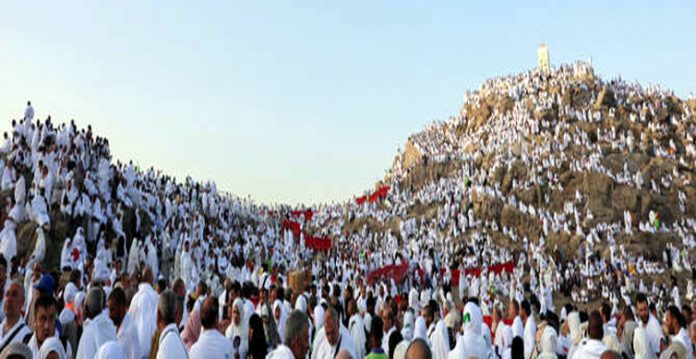The 1446 Hajj season (2025) will be remembered for more than its spiritual meaning—it also marks the end of Hajj happening during the hot summer. According to Saudi Arabia’s National Center of Meteorology, this year’s Hajj is the last one in peak summer for the next 25 years.
In the coming decades, Hajj will move to cooler seasons. Over the next 16 years, it will take place eight times in spring and eight times in winter. After that, Hajj will shift to autumn and slowly return to summer around 2050.
This change is due to the Islamic lunar calendar, which moves back about 10–11 days every year compared to the Gregorian calendar. For pilgrims and Saudi organizers, this change brings relief from the extreme heat that often makes the journey more difficult.
Also Read: AI-Powered ‘Falcon’ Firefighting Drone to Debut During Hajj 2025
For many years, Saudi Arabia has worked to keep pilgrims safe from the summer heat—using mist fans, shaded paths, and emergency teams for heatstroke. But summer Hajj has always been a challenge.
“This is a big moment,” said Hamza Al-Dosari, a climate expert from Riyadh. “Summer Hajj brings risks like dehydration and heat exhaustion. Moving to cooler months will make Hajj safer and easier.”
Al-Dosari said the cooler seasons will offer new chances to improve Hajj services. “Temperatures will be 10 to 15 degrees lower. That means less pressure on cooling systems and better conditions for the elderly or those with health problems.”
However, he added that spring and winter also bring their own weather concerns, like rain or cold winds. “Planning doesn’t get easier. It just changes. But overall, it’s a positive shift.”
For Sarah Al-Abdulmohsen, a 32-year-old Saudi woman from Dhahran, the heat during this year’s Hajj was tough. “It was 47°C in Mina. I was grateful to be there, but the heat was hard,” she said.
She welcomed the news of cooler Hajj seasons. “This will help older people and families. You’ll be able to focus more on your prayers without worrying about the heat.”
Although the Ministry of Hajj and Umrah has not released official plans yet, many expect big improvements. Al-Dosari believes services like transport, food delivery, and energy use will all benefit from cooler temperatures. “Pilgrims will have more energy and focus,” he said.
Future Hajj seasons could also help with Saudi Arabia’s Vision 2030 goals by using less electricity for cooling and making more use of outdoor spaces.
Some people may feel nostalgic about summer Hajj, especially younger Saudis who’ve only known it that way. But for others—especially those who waited because of health reasons—cooler Hajj seasons will open the door to finally make the journey.
This change is not just about weather. It could reshape how millions of Muslims experience one of Islam’s most important rituals, both in body and in spirit.
(This story is sourced from a third-party syndicated feed. Raavi Media takes no responsibility or liability of any nature. Raavi Media management/ythisnews.com can alter or delete the content without notice for any reason.)


